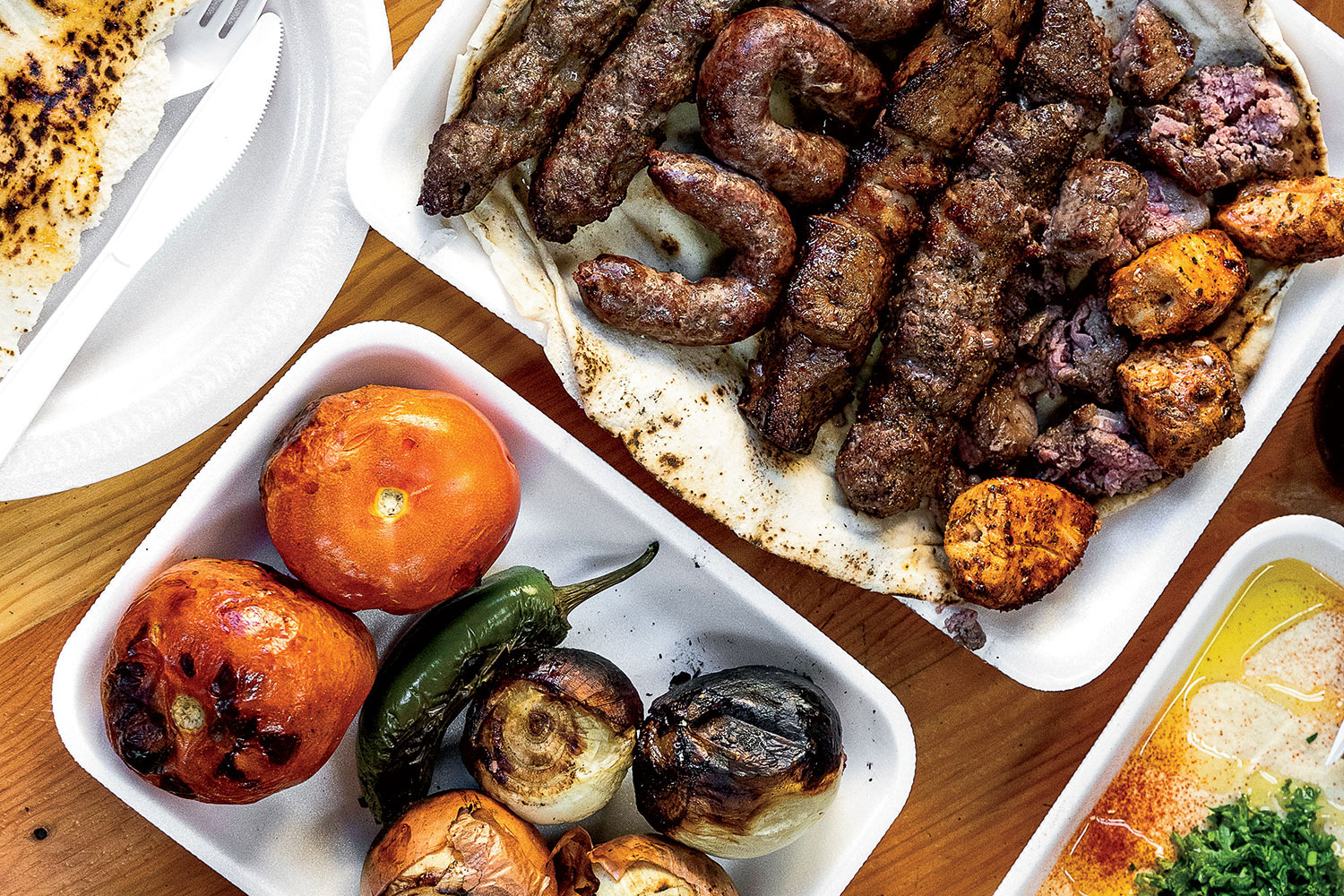
Drive time:4.5 hours
Distance:275 miles
I am sitting at Sheeba, a restaurant in Dearborn, Michigan, and a waiter has just dropped off a volcanic clay pot of Yemeni stew called fahsah. As I blow on a spoonful of this bubbling glory, two more waiters walk by hauling what appears to be a baby lamb on a palanquin. It looks almost as if the creature wandered onto a bed of rice, fell asleep, and was roasted whole. The servers place the lamb in the center of a large table, and everyone there goes “Ooooohhhh,” and I’ve never in my life so wanted to crash a party.
Then again, maybe I already have. In recent years, I’ve fallen hard for Detroit — its art, its architecture, its warp-speed revival from decay. But I hadn’t had time to explore Dearborn, the close-in suburb that is home to the country’s largest Arab American population and that has, by reputation, some of the best Middle Eastern restaurants outside of the Fertile Crescent. It was time to rectify that situation.
Advertisement
Levantine cuisine spreads all over this city of nearly 100,000 and into the neighboring towns of Dearborn Heights and Livonia, but I decided to focus on the epicenter, West Warren Avenue, where narrow storefronts that serve one specialty crowd up against palatial bakeries and vast dining warrens. In this neighborhood, baskets of hot pita still inflated with oven steam are a given kickoff to any meal.
The first Arab immigrants to establish a presence here came in the late 19th century. More recently people from Yemen, Iraq, Syria, and the Palestinian territories have arrived, and today the community represents a patchwork of cultures, each with its distinctive cooking traditions.
At Al Chabab I meet Chamo Bakarat, a wonderful man and fine cook who escaped the destruction of Aleppo, Syria, and is now an ambassador for its foodways. The city is famous throughout the Arab world for its hot peppers, fruit orchards, and refined cuisine. Here in Bakarat's small dining room made cozy with posters and partitions, I feast on muhammara, a spicy-sweet spread of roasted pepper, walnut, and pomegranate, and grilled lamb kebabs in inky cherry sauce while I look longingly at my neighbor’s kibbeh poached in warm spiced yogurt.
Nearby, cars prowl the parking lot behind Al Ameer, which received a James Beard America’s Classics Award. Ensconced in a leatherette booth there, I see why. The decor and prices suggest 1972, the service never lags, and the traditional Lebanese food — baba ghanoush, stuffed grape leaves, grilled makanek sausages — is on point.
I love it, but not as much as I love Dearborn Meat Market. Picture this: A friend and I arrive midday expecting a restaurant and find, as advertised, a meat market. Butcher cases, butchers, meat. Lots of meat. But there’s also a crowd and a busy dude with a notepad. “Two for lunch?” he asks. “Don’t go anywhere.” A few minutes later, he pulls us through the crowd to the front counter, and we place our order off the $2.50 kebab menu — chicken, sausage, and five cuts of beef, including heart, liver, and kidney. A few minutes after that, he ushers us farther back, past the coolers and restrooms, to a sunny room filled with tables laden with sauces and condiments ranging from KC Masterpiece to a shaker of red powder labeled “Hot AF.” Along one side of the room stretches a brick pit grill, where two cooks fan and spritz the coals and flip kebabs by the dozen. They arrive cooked to order with grilled tomatoes and onions and a towering stack of pita.

I can’t imagine this market existing anywhere outside Dearborn. The same goes for Qahwah House, a café where espresso drinks are bested by Yemeni brews fashioned from some combination of coffee beans, coffee husks, and spices. I order a pot of jubani, flavored with cardamom, ginger, and cinnamon, and take a seat at the counter, where the baristas brew coffee by stirring it in long-handled copper pots set over induction burners. I order a wedge of sabaya, an intensely buttery laminated pastry, and sip on the golden-brown brew from a tiny cup. When I make noises about taking the rest of my coffee in a to-go cup, a barista says, “Why? Stay,” and deftly wedges me into a neighbor’s conversation.
Later I get to have a CheeseDome, the trademarked dessert served by Lebon Sweets. It starts with a square of kanafeh, a much-obsessed-over pastry made with stretchy cheese, shredded kataifi dough, and rosewater syrup. This hot business is then slid into a hollow sesame bread that has been puffed and browned for maximum crunchitude, and, ta-da, CheeseDome!

I find four kinds of kanafeh at Shatila Bakery & Café, a local institution with hundreds of cakes and pastries, both European and Middle Eastern. From now on, a square of this spot’s pistachio baklava, so crisp it rings in my ears, is all I’ll ever want with a cup of strong Arabic coffee. I think about picking up a gift box. But I am joined by a friend who lives nearby, and she persuades me to do my souvenir shopping at Hashems Roastery & Market. Inside, on the counter, is a tasting platter of nuts, dried fruits, and Lebanese sweets. As much as we want to stand there and graze, we comb the aisles of this wonderland, stacked floor to ceiling with dry goods, and I pick up Iranian pistachios, blood orange herbal tea, and coffee roasted in-house with cardamom.
By the time we make it to Sheeba, my appetite should be completely tapped out, but the smell of that passing lamb finds the corner of my stomach that can still growl.



